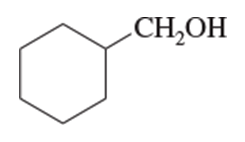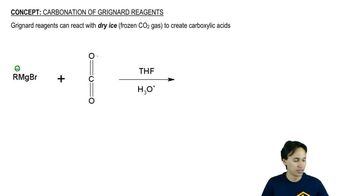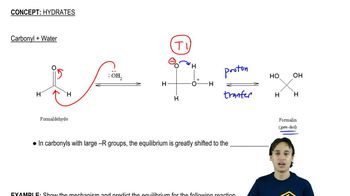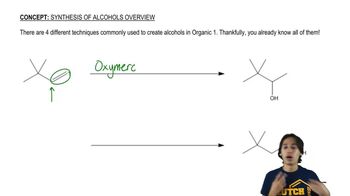Show how you would synthesize the following alcohol by adding Grignard reagents to ethylene oxide.
(a) 2-phenylethanol

 Verified step by step guidance
Verified step by step guidance Verified video answer for a similar problem:
Verified video answer for a similar problem:



 13:4m
13:4mMaster Reactions of Organometallics with a bite sized video explanation from Johnny
Start learning